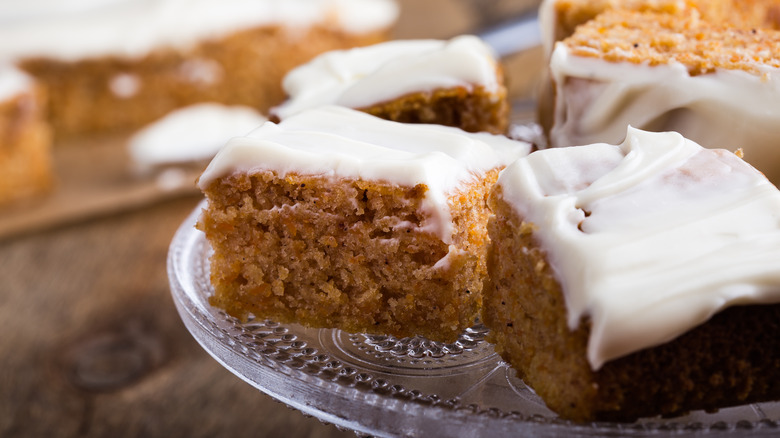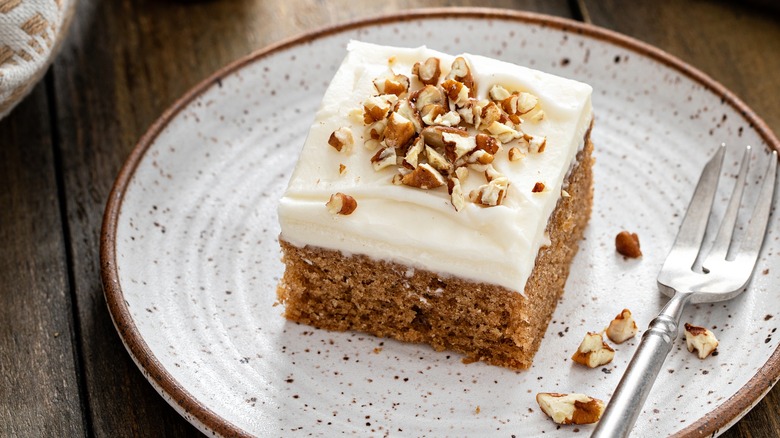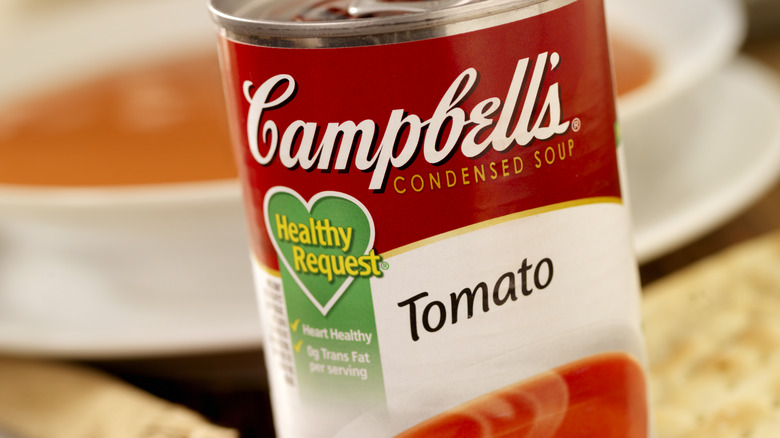Canned Tomato Soup In A Cake Is A Retro Classic You Should Try
You've turned canned tomato soup into a luxurious bisque and upgraded your basic recipe for Sloppy Joes. Get ready to use the pantry staple in your next cake. As surprising as it might sound, canned tomato soup is your ticket to a moist, spongy treat that can satisfy even the most demanding dessert cravings. Though the name of the cake may prompt simultaneous appeal and skepticism, your very first bite will leave you convinced. In case you're cautious, tomato soup has been poured into cake batter for decades, and the recipe is simple enough that even novice home bakers can cut the soup-infused cake with the confidence of a culinary master.
The recipe to make tomato soup cake, often referred to as "Mystery Cake," can be traced to the 1920s, when kitchen commodities were scarce. Along with the inclusion of tomato soup, your favorite spices — cinnamon, ginger, nutmeg, cloves, or allspice — will help create an aromatic, flavorful batter to place into your oven. And since tomato soup can replace the need for milk, creams, and oil, eaters with specific dietary needs can dig into a slice without needing to worry about circumnavigating nutritional ingredients. After tasting this chewy deliciousness, you, too, will be reaching for more.
The evolution of tomato soup cake
Campbell Soup powered both the soup cake and the incorporation of soup in other meal-time recipes after launching a company test kitchen. Steamed pudding made with canned soup was one of the first recipes printed on the outside of cans. Yet in its original form, the soup cake recipe was basic. Neither icing nor frosting were added to the baked treat, and finished cakes were presented as plain, single-layer sheets.
When butter was hard to come by after World War II, the ease of tomato soup cake surged in popularity. And after Campbell's began printing the recipe on labels in the 1960s, it was only a matter of time before this cake began to appear as a recognized dish on dinner tables and at backyard potlucks.
As carrot cake grew in popularity in the 1970s, the same cream cheese frosting that was swiped onto these creations found its way onto the top of tomato soup cakes. A new flavor combination was born, and no longer were pieces served flat and bare, but layers of the colorful cake were held together with frosting and topped with crushed nuts.
Making cake with the contents of a soup can
In its purest form, the simple tomato soup cake recipe can be baked in trays or pans. For more complex presentations, layers can be stacked, and bakers can turn up flavor dials with butter, eggs, and frosting or icing. Add vanilla or another extract of your choosing to develop your own flavor variations, and fold in your favorite pieces of dried fruit for an added chewy texture. Crowned with sprinkles of walnuts or pecans, shavings of chocolate, or mascarpone prior to serving, you'll have yourself a dessert that won't raise any suspicious glances. In fact, the brightly colored cake may be mistaken for a pumpkin or carrot cake, and with the addition of chopped nuts, you may very well have everyone fooled.
When crowned with rich slatherings of homemade cream cheese frosting, this delight can be enjoyed morning or night and served with coffee or an adult beverage of your choosing. Once you've tried adding soup to cake batter, your experimentations with baked goods, sweet treats, and canned soup need not end. Consider making cupcakes, waffles, and pancakes with the soup batter. For an extra dose of nostalgia, play oldies tunes while you bake, and you'll have yourself a theme to tie your next dinner party together — just be prepared for the look of surprise when you tell your guests exactly how you made your dessert recipe.


